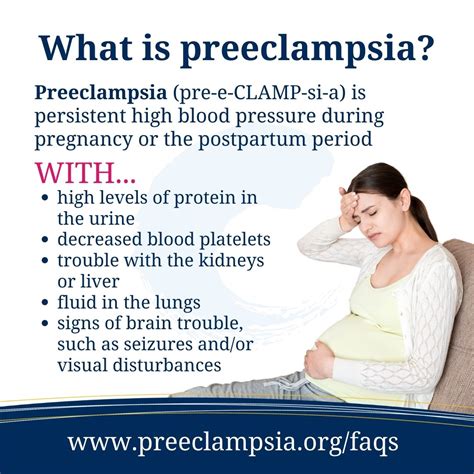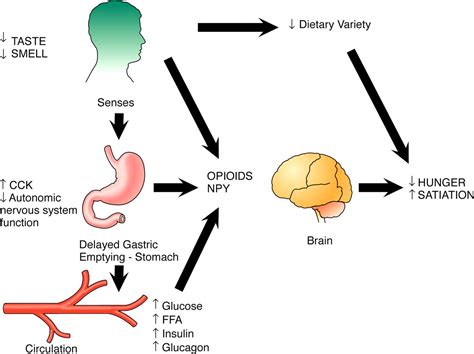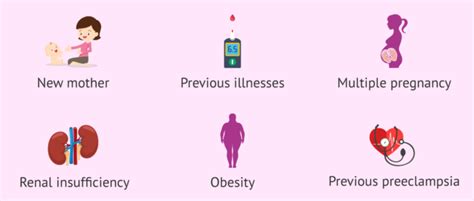Intro
Discover the 5 causes of preeclampsia, a pregnancy complication. Learn about high blood pressure, placental issues, and other risk factors, including genetic predisposition and lifestyle influences, to understand this condition and its symptoms.
Preeclampsia is a pregnancy complication characterized by high blood pressure and damage to organs such as the liver and kidneys. It is a leading cause of maternal and fetal morbidity and mortality worldwide. Despite its severity, the exact causes of preeclampsia are not fully understood, but several factors have been identified as contributing to its development. Understanding these factors is crucial for early detection, prevention, and management of the condition.
The importance of recognizing the causes of preeclampsia cannot be overstated. It is a condition that can arise suddenly and without warning, posing significant risks to both the mother and the baby. By identifying the underlying factors that contribute to preeclampsia, healthcare providers can take proactive steps to monitor high-risk pregnancies closely and intervene early when symptoms arise. This not only improves outcomes for mothers and babies but also reduces the economic and societal burdens associated with preeclampsia.
Preeclampsia affects a significant number of pregnancies worldwide, with estimates suggesting that it complicates up to 8% of pregnancies. The condition is more common in first pregnancies and in women with a history of preeclampsia in a previous pregnancy. Given its prevalence and potential severity, it is essential for expectant mothers and their healthcare providers to be aware of the risk factors and causes of preeclampsia. This knowledge enables them to take a proactive approach to prenatal care, ensuring the best possible outcomes for both mother and baby.
Introduction to Preeclampsia Causes

Preeclampsia is a complex condition, and its causes are multifactorial. While the exact mechanisms are not fully understood, research has identified several key factors that contribute to its development. These include genetic predisposition, environmental factors, and physiological changes during pregnancy. Understanding these causes is essential for developing effective prevention and treatment strategies.
Genetic Factors
Genetic factors play a significant role in the development of preeclampsia. Women with a family history of preeclampsia are at a higher risk of developing the condition. This suggests that there may be a genetic component to the disease, although the specific genes involved have not been fully identified. Research into the genetic causes of preeclampsia is ongoing, with the hope of developing genetic tests to identify women at high risk.Physiological Changes During Pregnancy

During pregnancy, the body undergoes significant physiological changes to support the growing fetus. One of these changes involves the development of the placenta, which provides oxygen and nutrients to the baby. In preeclampsia, the placenta does not develop properly, leading to inadequate blood flow and high blood pressure. This highlights the importance of placental development in the prevention of preeclampsia.
Environmental Factors
Environmental factors also contribute to the development of preeclampsia. These can include lifestyle factors such as diet and physical activity, as well as exposure to certain toxins. For example, women who have a diet high in salt and low in essential nutrients such as calcium and vitamin D may be at a higher risk of developing preeclampsia. Understanding the impact of environmental factors can help women make informed choices about their lifestyle during pregnancy.Pre-existing Medical Conditions

Pre-existing medical conditions can also increase the risk of preeclampsia. These conditions can include chronic hypertension, diabetes, and kidney disease. Women with these conditions should be closely monitored during pregnancy, as they are at a higher risk of developing preeclampsia. Early detection and management of preeclampsia are critical in these cases to prevent complications.
First Pregnancy and Multiple Pregnancies
First pregnancies and multiple pregnancies (such as twins or triplets) are also associated with a higher risk of preeclampsia. The reasons for this are not fully understood but may relate to the body's response to the pregnancy and the increased demand on the mother's cardiovascular system. Women in these situations should be aware of the increased risk and work closely with their healthcare providers to monitor their health during pregnancy.5 Key Causes of Preeclampsia

- Genetic Predisposition: As mentioned, genetic factors can play a significant role in the development of preeclampsia. Women with a family history of the condition are at a higher risk.
- Placental Abnormalities: The placenta plays a crucial role in pregnancy, and abnormalities in its development can lead to preeclampsia. Proper placental development is essential for ensuring adequate blood flow and nutrient supply to the fetus.
- Environmental Factors: Lifestyle choices and exposure to certain toxins can contribute to the risk of preeclampsia. A healthy diet and avoiding harmful substances are important for reducing this risk.
- Pre-existing Medical Conditions: Conditions such as chronic hypertension and diabetes can increase the risk of developing preeclampsia. Close monitoring and management of these conditions during pregnancy are vital.
- Immunological Factors: The immune system's response to the pregnancy may also contribute to preeclampsia. Research suggests that an abnormal immune response can lead to inflammation and high blood pressure.
Conclusion and Future Directions
In conclusion, preeclampsia is a complex condition with multiple causes. Understanding these causes is essential for the development of effective prevention and treatment strategies. By recognizing the risk factors and taking proactive steps, women and their healthcare providers can work together to reduce the incidence and impact of preeclampsia. Future research should continue to explore the genetic, environmental, and physiological factors contributing to preeclampsia, with the aim of improving outcomes for mothers and babies worldwide.What are the symptoms of preeclampsia?
+The symptoms of preeclampsia can include high blood pressure, protein in the urine, severe headaches, vision changes, and abdominal pain. In severe cases, it can lead to seizures, stroke, and other life-threatening complications.
How is preeclampsia diagnosed?
+Preeclampsia is diagnosed through a combination of physical exams, medical history, and laboratory tests. These can include blood pressure checks, urinalysis to detect protein, and blood tests to assess liver and kidney function.
Can preeclampsia be prevented?
+While preeclampsia cannot be completely prevented, certain steps can be taken to reduce the risk. These include maintaining a healthy weight, following a balanced diet, staying physically active, and managing any pre-existing medical conditions.
We invite readers to share their experiences and ask questions about preeclampsia in the comments below. By raising awareness and promoting discussion about this important health issue, we can work together to improve outcomes for mothers and babies worldwide. Share this article with someone you know who might benefit from this information, and let's continue the conversation about preeclampsia and women's health.
